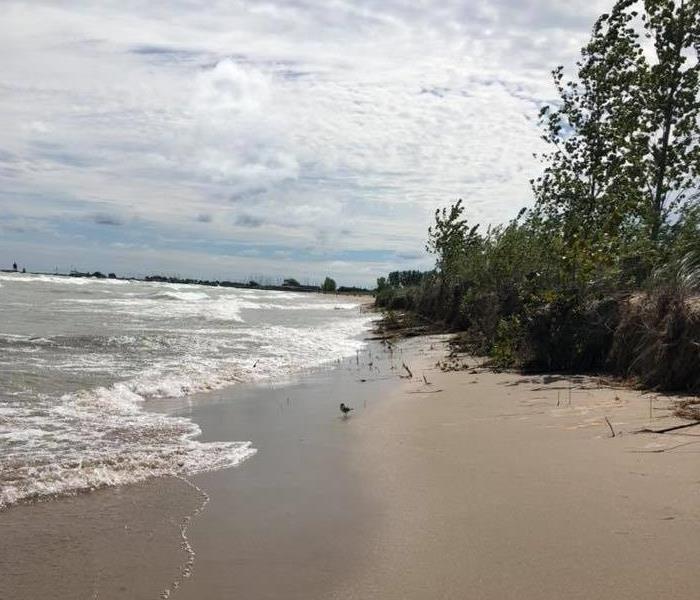Beneath the Waves: Surviving a Rip Current
9/13/2018 (Permalink)
Lake Michigan has a certain appeal that many cannot resist. It’s scenic, ocean-like views are enthralling, with warm wind whipping across an invisible horizon, the roar of the waves colliding with the shore. If you are a resident of Racine County, it’s almost unheard of if you haven’t dug your toes into the sandy sanctuary of North Beach and its hidden inlets, or find yourself drawn to the haunting beauty of its many lighthouses that pepper the expansive coast line. She has a welcoming nature on those hot summer mornings, her water always a cool refreshing escape from the heat of the city sun. What we take for granted is how powerful those waves can be beneath the beauty of her exterior. In this edition of SERVPRO Survival we are going to be hitting on the most important steps to take if ever you find yourself or a loved one in the grip of a dangerous rip tide.
What we know most commonly as a ‘rip tide’ is actually a rip current (a narrow channel of water rushing outwards) which can feel as gentle as a tug at first.
The Shallows:
- Exit shallow water immediately when the sensation of tugging or pulling occurs. A rip tide is more difficult to maneuver from when in deeper water.
- If you are in chest deep water and still able to touch bottom, walk sideways out of the line of current and immediately make your way to shore. (Always take note of posted warnings and do not swim where it is not recommended)
Swept away:
- Remain calm. Rip tides WILL NOT pull you below the surface, even if it feels that way. What the current is doing is pulling you out further, not under. You must keep a calm and clear mind to handle the situation.
- Do not exhaust yourself. If you are an adequate swimmer you are in no immediate danger of drowning if you do not over exert your mind or body.
- Call for help if there is anyone in the immediate area.
(DO NOT ATTEMPT any rescue efforts without the aid of a flotation device. You could be swept away as well. Immediately call for rescue services)
- Swim parallel to the coast line, no matter how far you have drifted. Swimming parallel to the coast will release you from the hold of the current. Swim in the direction of the breaking waves, as this indicates where the rip tide ends.
Back Float:
- Conserving energy is essential to rip tide survival. If you feel yourself losing energy, the best technique is just to flow with it. Do not panic that you are further from shore. Back float and relax until the tide has dissipated and rescue efforts can commence.
Out of its grasp:
- Swim diagonally to shore once released from the current. It reduces the possibility of reentering it unintentionally.
- Rest as frequently as necessary to regain and sustain energy.
There is no way to predict when certain emergency situations arise. These simple and effective tips can help better ready yourself for when tragedy strikes. From all of us at SERVPRO of Racine, Stay aware of your environment and stay safe.



 24/7 Emergency Service
24/7 Emergency Service
